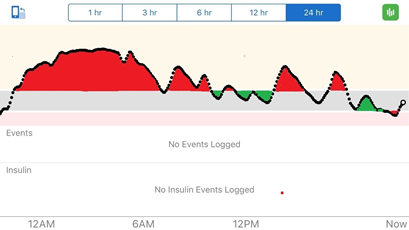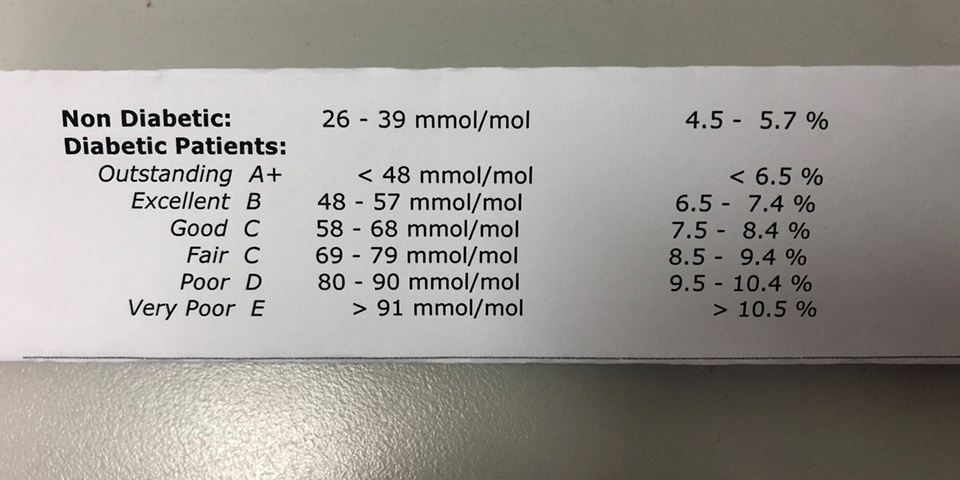
Happy fall and Halloween eve! And welcome to week 4 of our 7-week series on applying a solution-focused approach to the AADE7 Self-Care Behaviors for managing diabetes. This series is focusing on “flipping” the conversation from a “problem focused” (traditional medical) approach to a solution-focused conversation. Have you tried any “flips” in the past 3 weeks? Please let us know if you have, and what your experience was.
Last week we shared about taking a solution-focused approach to Healthy Coping – you can read it here. And the weeks prior we focused on Healthy Eating here and Being Active here. This week, we are talking about monitoring. Monitoring blood glucose. in the spirit of Halloween, can be very helpful to see how a Halloween treat, and other things in life, impact blood glucose.
While many people use meters to stay in touch with their blood glucose, a CGM (short for continuous glucose monitor), may be a helpful choice for some. With a CGM one can see patterns and trends over time, not just one single number at one moment in time. Also, they can receive real time alerts for when blood glucose is going above or below target. Around holidays such as Halloween, a CGM can be a great monitoring tool to see how the choices made impact glucose levels.
Let’s look at some examples…
AADE7 Self-Care Behavior #4: Monitoring
Below you see a CGM tracing over a 24-hour period, beginning at midnight. The goal is more green – more time in range – more time feeling better. Have you heard of the acronym FNIR? It means flat, narrow and in-range. That is the goal of CGM tracings.
Suppose this tracing below is a few hours after “throwing caution to the wind” and sampling a few more fun size Halloween treats than planned. The Halloween treats are just around for a day or two. It’s just one day. It’s important to keep the big picture in mind.

While the focus may be drawn to the time out of range (in red), let’s turn focus to the green (the time in range). How was that accomplished? We learn that the individual made it to the gym for an early morning workout and enjoyed a healthy lower carb breakfast. Monitoring helped them learn.
From our years in practice we’ve learned that people who live with diabetes have different perceptions around monitoring. For some, it can become an obsession – they need to know where their blood glucose is all the time. It can certainly be a mental burden. And others may not want to focus on their blood glucose. Knowing their number may create negative feelings, fear of judgement and guilt. So, they choose to not check their blood glucose to provide a sense of safety and self-preservation.
We know that glucose numbers are simply that……they are numbers, and numbers provide information. The goal of monitoring is to generate data to help people make choices and changes. Numbers are not good or bad and are certainly not a test score. You may have recently seen this image below on Twitter and/or the discussion around it. This is NOT a solution-focused approach!

When working with clients instead of focusing on what is not working well or what is “wrong”, here are 3 illustrations of how to flip the conversation:
Try this: You’ve been working hard to fit in physical activity. In looking at your CGM tracinings, what small steps can you take in the direction toward the goal of seeing more time in range (green in the tracing)?
Instead of this: What happened when your CGM was red (out of range)?
Try this: I know you’ve had a lot going on. You mentioned that you checked your blood glucose twice this past week. How did you manage to check twice?
Instead of this: You only checked your blood glucose twice this past week?
Try this: I see that your A1C is in your target range. How did you manage to do that?
Instead of this: Your A1C is outstanding, A+!
We challenge you each week to try incorporating some flips into your conversations and let us know what impact they have.
Join us next week as we discuss a solution focused-approach to the self-care behavior around taking medications.
We welcome anyone interested in our approach to Subscribe to our blog and we’ll email you when a new post is published!
If you are a health care professional and interested in learning more about our solution-focused practice and approach, when you subscribe to our blog, we’ll send you in return a FREE resource of 10 Solution-Focused Questions to start a solution-focused discussion with your clients.
Follow us on Twitter and Instagram @AFreshPOVforYou
Disclaimer: A Fresh POV for You is a participant in the Amazon Services LLC Associates Program, an affiliate advertising program designed to provide a means for sites to earn advertising fees by advertising and linking to amazon.com.






One Comment
Pingback: